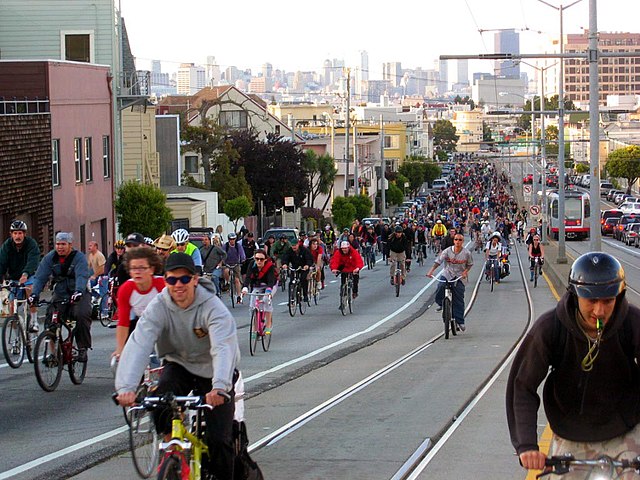A zero-emission vehicle, or ZEV, is a vehicle that does not emit exhaust gas or other pollutants from the onboard source of power. The California definition also adds that this includes under any and all possible operational modes and conditions. This is because under cold-start conditions for example, internal combustion engines tend to produce the maximum amount of pollutants. In a number of countries and states, transport is cited as the main source of greenhouse gases (GHG) and other pollutants. The desire to reduce this is thus politically strong.
Critical Mass cyclists, San Francisco, April 29, 2005, and Muni Metro electric tram on J Church line
The Nissan Leaf electric car is a zero emission vehicle (ZEV).
The Indian REVA electric car is a zero emissions vehicle (ZEV).
The Honda FCX Clarity, launched in 2008, is a fuel cell hydrogen vehicle compliant with the ZEV standard and sold in Japan and in the U.S. (only in Los Angeles).
California Air Resources Board
The California Air Resources Board is an agency of the government of California that aims to reduce air pollution. Established in 1967 when then-governor Ronald Reagan signed the Mulford-Carrell Act, combining the Bureau of Air Sanitation and the Motor Vehicle Pollution Control Board, CARB is a department within the cabinet-level California Environmental Protection Agency.
California Air Resources Board Laboratory, Los Angeles, in 1973
Researchers at the Statewide Air Pollution Research Center manufacture smog using a photochemical tube reactor (May 1972).
Sunlight filtered through smog near Blythe, May 1972
GM EV1








